Mitigating the impacts of climate change and human activities on coastal community resilience, water quality and fisheries restoration are themes that connect New York Sea Grant’s newly funded 2016-2017 Omnibus research projects funded through the National Oceanographic and Atmospheric Administration.
Impacts of Climate Change and Ocean Acidification on Economically Important Shellfish in New York: Are There Effective Mitigation and Adaptation Measures?
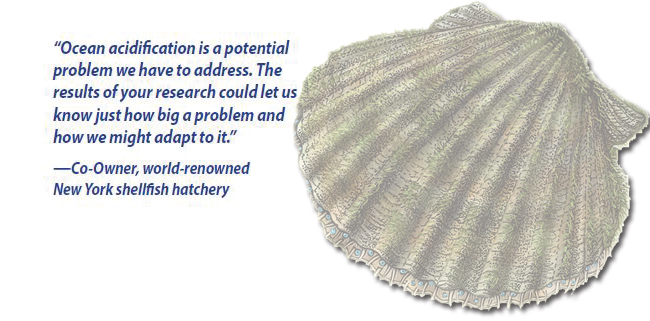
Climate change is acidifying, deoxygenating, and warming the ocean, posing a potential threat to New York’s shellfish populations. Led by Christopher Gobler, of the School of Marine and Atmospheric Sciences at Stony Brook University, researchers will help shellfish growers by examining how these factors affect economically-important bay scallops, hard clams and oysters, then create maps to pinpoint New York waters most hospitable to the growth and survival of each bivalve species.
To share project goals and results with shellfish growers, hatcheries and resource managers, the researchers will host an initial workshop to introduce aspects of acidification and climate change and a wrap-up workshop to share the resultant maps of NY waters that appear most hospitable to the growth and survival of each bivalve species as well as an assessment of options to mitigate the effects of climate change.
Identifying Genetic and Habitat Limitations to Cisco Restoration in Lake Ontario

Salmon fishing in upstate NY is an economic engine that could be stalled as climate change affects salmon habitat. Cornell researchers using high tech methods to predict where the fish are likely to be will share results with charter boat operators, fishery managers and the public.
Stocks of once abundant lake herring (cisco), a critical food source for salmon, have been dwindling, reducing salmon restoration success in Lake Ontario. Cornell researchers, led by Matthew P. Hare, Department of Natural Resources, Cornell University will identify the characteristics of suitable spawning habitat and genetic integrity of cisco, both of which are vital for a resilient cisco population and concomitant salmon restoration success.
Reconnecting Waters for Eels and River Herring: a Mediated Modeling Approach to Assess Receptivity to Dam Removal in the Hudson-Mohawk Watershed
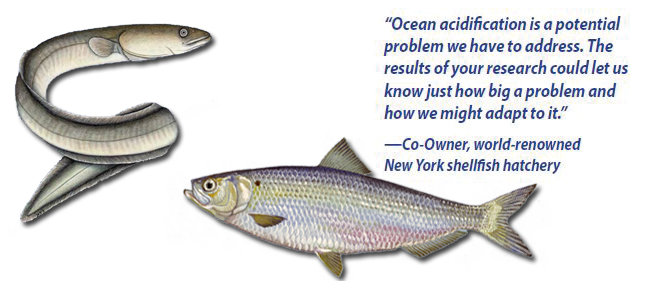
Hundreds of dams and culverts in the Hudson/Mohawk watershed act as barriers for the migration of native populations of eel, blueback herring and alewife. Researchers from SUNY College of Environmental Science & Forestry, led by Karin E. Limburg, will engage stakeholders in key communities within the watershed to improve receptivity for dam removal and hence ensure greater restoration success of migratory fish populations.
By using three educational interventions—lectures, field trips and mediated modeling workshops—it is hoped that deeper stakeholder engagement and understanding will improve community receptivity to dam removal to restore access to spawning habitat. Results from the project will provide information about which methods or combination of methods increase community understanding and support for dam removal.
Increasing Coastal Resilience through Facilitated Zoning Code Assessment and Amendment
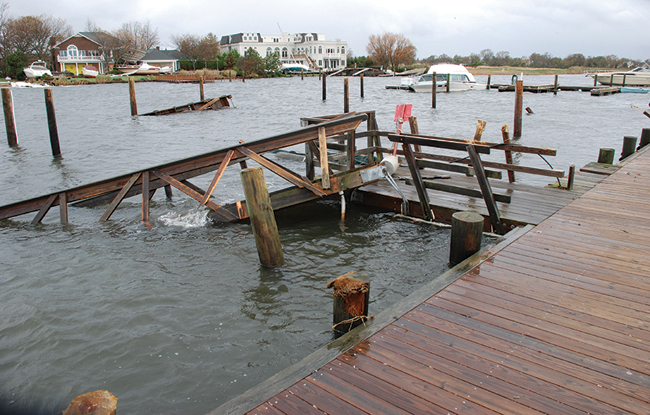
A new project focused on amending zoning laws, will help coastal communities bounce back from the ravages of severe storms such as Hurricane Sandy. Photo by John Baroni
As communities seek to increase their resilience in the face of severe coastal storms and sea level rise, researchers from Touro Law School and Pace University, led by Sarah J. Adams-Schoen, Land Use & Sustainable Development Law Institute, Jacob D. Fuchsberg Law Center, Touro College, will provide practical tools and leadership training to directly assist them in amending their zoning codes.
The research team will develop presentations and training for community leaders, planners, attorneys and municipal officials on Long Island and in the New York City area involved with the development of future policies addressing sea level rise and severe storms.
Determining Degradation Rates, Products and Impacts for Prominent Plastics in Freshwater Environments

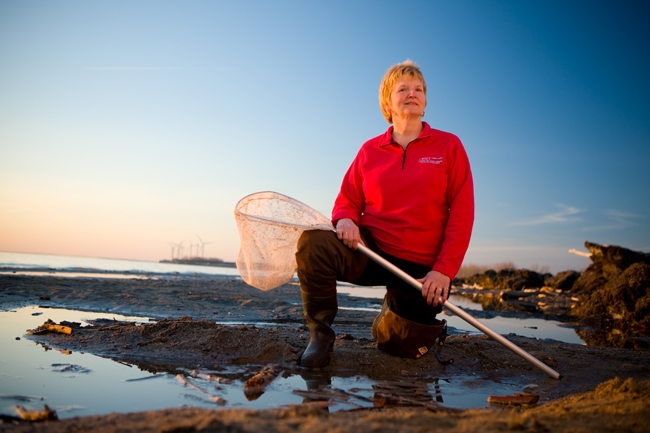
Congratulations to NYSG’s Helen Domske, recipient of the 2016
Distinguished Scientist award from the Western New York Science
Congress. Helen has led award-winning campaigns to keep pharmaceuticals
and microplastics out of NY’s waters.
Plastic. It’s everywhere. The Great Lakes contain plastic pollution comparable to that of the ocean. The vast majority of plastic particles are small enough to be ingested by plankton and other filter feeders which form the base of lake food webs. Once ingested, these plastics can serve as a source of organic contaminants to other organisms up the food chain.
A research team led by Sherri Mason at SUNY Fredonia will determine degradation rates within three different freshwater environments (shoreline, open-water, and estuary) utilizing laboratory-scale environmental chambers and focusing upon those plastics found to be most prominent in Great Lakes Plastic Pollution open-water surveys. The research team will assess ecosystem impacts by conducting in-lab feeding studies using zooplankton and algae to determine growth and survival rates of microorganisms both with and without microplastics incorporated into feed. Project results will fill a gap in scientific knowledge about the impacts of microplastics within freshwater habitats.
Pharmaceuticals in New York Waters: Effectiveness of Advanced Treatment Options, Environmental Levels and Potential Effects
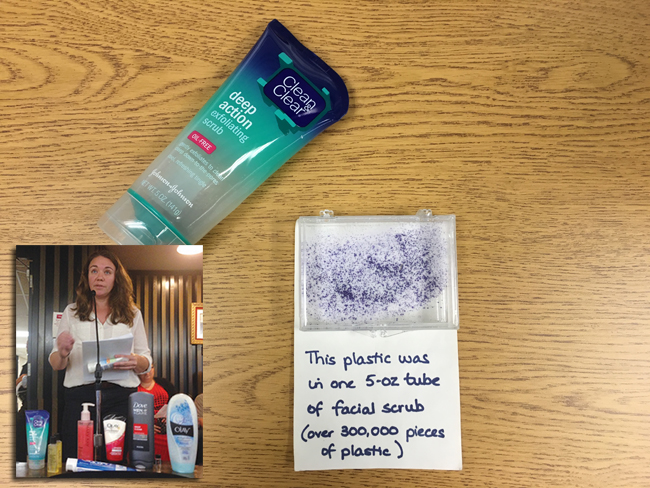
Fredonia State professor and researcher Dr. Sherri Mason (inset photo) speaking to the Chautauqua County Legislature prior to its vote on a local law banning microbeads in September 2015. Photos courtesy of Paul C. Focazio/NYSG; WRFA Radio (inset)
Another set of contaminants in our Great Lakes and marine coastal surface waters brought on by human activity are hundreds of pharmaceutically active drugs, personal care products and their breakdown products. Using advanced chemical analysis and laboratory models, researchers at Stony Brook University and University at Buffalo, led by SBU’s Anne McElroy, will examine how these compounds affect fish health and behavior.
The research team will conduct coordinated field sampling and laboratory analysis involving advanced mass spectroscopic chemical analytical approaches, and detailed behavioral and cellular gene expression analysis using a laboratory species model (zebrafish) and then indigenous fish species.
— Barbara A. Branca
More Info: New York Sea Grant
New York Sea Grant (NYSG), a cooperative program of Cornell University
and the State University of New York, is one of 33 university-based
programs under the National Sea Grant College Program (NSGCP) of the
National Oceanic and Atmospheric Administration (NOAA). The NSGCP
engages this network of the nation’s top universities in conducting
scientific research, education, training and extension projects designed
to foster science-based decisions about the use and conservation of our
aquatic resources. Through its statewide network of integrated
services, NYSG has been promoting coastal vitality, environmental
sustainability, and citizen awareness about the State’s marine and Great
Lakes resources since 1971.
New York Sea Grant maintains Great Lakes offices at SUNY Buffalo, the
Wayne County Cooperative Extension office in Newark and at SUNY Oswego.
In the State's marine waters, NYSG has offices at Stony Brook University
and Stony Brook Manhattan, in the Hudson Valley through Cooperative
Extension in Kingston and at Brooklyn College.
For updates on Sea Grant activities:
www.nyseagrant.org has RSS,
Facebook,
Twitter, and
YouTube links. NYSG also offers a free e-list sign up via
www.nyseagrant.org/coastlines for its flagship publication,
NY Coastlines/Currents, which is published several times a year.